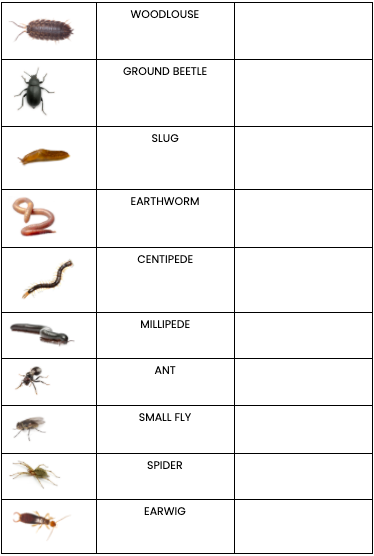
EdPlace's Key Stage 1 Home Learning Science Lesson: Bugs
What’s it like to live life as an ant? Or a woodlouse? Or a butterfly? That’s a tough question to answer but maybe we can find out a bit about what life’s like for them by trying to find out where they live, what they look like and what sort of things they do.
You know what your EdPlace team is like – always there with fun stuff to do, lots of exciting things to get out and find out about – and today it’s all about those fascinating creepy-crawlies who we share our world with. It’s easy to let it all go by and never notice but it really helps to broaden your understanding of your world by finding out more about what makes it tick, what else lives there and how they live – so different from us!
Minibeasts are found pretty much everywhere – you just have to look! Whether you live near a city park, you have a garden, a nearby hedgerow, a piece of woodland, there are little critters to be found, so let’s get stuck in and get looking!
Learning Objectives:
1) Have fun discovering, identifying and learning about bugs
2) Extend learning of habitats, invertebrate groups and collection methods
3) Widen experience of practical outdoor and collaborative work
We're Going on a Bug Hunt: Activity
You’re going to be investigating animals that are generally small and fast, so we need techniques to help you get a closer look.
Pitfall trap
Get together:
1. Small yoghurt pot or plastic cup (it’s a good idea to make one or two small holes in the bottom with a sharp pencil so that any rain that gets in can drain away)
2. Trowel or, even better, a bulb planter (even a big spoon will work!)
3. Magnifying glass or lens if you’ve got one (don’t worry if not)
4. An adult
What you are going to do is to make a hole in the ground to sink the yoghurt pot in so that any bugs wandering around on the ground may fall into your ‘trap’ so that you can get a closer look at them.
So, first of all – where to put it? If you’ve a garden, that would work well but don’t worry if not – there’s loads of stuff out there! Try a local wood, somewhere secluded in your local park, under a hedge – the important thing is that you place your trap where no one’s going to mind it being there for 24 hours and you’re not damaging anything.
Here’s what to do: if there are any leaves, etc. on the surface scrape those away. Then use your trowel or bulb planter to make a pot-sized hole in the ground – place the soil nearby as you’ll need that later. Once the hole is deep enough, sink your pot into it so that’s it’s level with the soil surface. Fill in any gaps around the edge with soil so that the pot is sitting there, ready for something to fall in.
That’s it for now! Leave it alone for 24 hours and then … it’s investigation time!
When you return to your pitfall trap the following day you’ll hopefully find that a few bugs have blundered into it! Use the identification chart to see the names of the creepy crawlies you’ve caught – common finds are woodlice, centipedes, millipedes, beetles and so on.
Here are some of the typical minibeasts you may find on your hunt – see how many you can find.

Once you’ve identified them it’s time to take the pot out of the ground and use that little pile of soil from yesterday to fill the hole in. It’s really important to remember that when you investigate the world around you to leave as small an impact as possible – try to leave everything as you found it – after all it’s someone’s home (or the homes of lots of someones!).
Big Butterfly Count
So, you’ve found some of the inhabitants of the soil surface – now let’s have a look at one sort of bug – butterflies! Until August 9th you can get involved in the Big Butterfly Count: https://bigbutterflycount.butterfly-conservation.org/
There’s a really handy app that can be downloaded on to a smartphone that will help with identifying butterflies and where you are seeing them – all available at the website. They also have Identification Charts of all the common butterflies you’re likely to see.
The instructions are all on the website but basically here’s what you do:
1. Choose a sunny spot in a garden, park, etc.
2. Sit for 15 minutes and watch!
3. Note any butterflies you see in that time - simple!
Conclusion
How many of the objectives have you achieved?
1. Had fun discovering and learning about bugs?
2. Found out more about where they live and what sort of bugs they are?
3. Great stuff!
EdPlace Activities to explore online
Want more? Then head to edplace.com and check out…
Now, you’ve had some practice, why not assign your child the following five activities in this order to test their understanding.
All activities are created by teachers and automatically marked. Plus, with an EdPlace subscription, we can automatically progress your child at a level tailored to their needs. Sending you progress reports along the way so you can track and measure progress, together - brilliant!
Activity 1 - Name Our Minibeasts
Activity 2 - Grouping Plants and Animals
Activity 3 - Life Cycle of a Butterfly
Keep going! Looking for more activities, different subjects or year groups?
Click the button below to view the EdPlace English, maths, science and 11+ activity library








